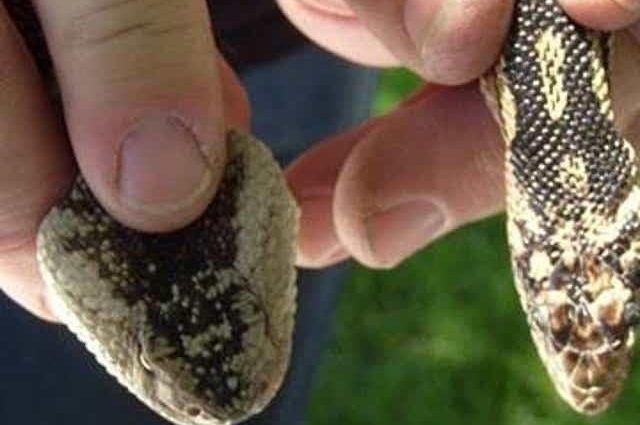By Kevin Foster
We are into spring and our reptilian friends are getting more active and will be more so as the weather warms. And with so many of us will be in the mountains enjoying nature, this month’s column is to help people determine if a snake is possibly venomous or not.
The best course of action with any snake, no matter if it is venomous or not, is to leave it alone. Observe and take pictures from a distance. Messing with the wrong kind of snake could be fatal but even if it isn’t, messing with the wrong kind of snake could really ruin your day. Many people will ask if a snake is poisonous. Well, to be truthful even a rattlesnake isn’t poisonous. You can eat them, and you will have no ill effects. They are, however, venomous. The difference is if you bite it and you die, it was poisonous, if it bites you and you die it was venomous. Anyway, nature as it is sometimes uses mimicking as a defense strategy for some of its critters. In Central California, the area we are most concerned about, we have rattlesnakes, and we have gopher snakes. Nature has made the markings on gopher snakes very similar to the markings on rattlesnakes. Gopher snakes, when they perceive they are threatened, will sometimes flatten their head somewhat to make it look more like the head of a rattlesnake and will even vibrate their tail, much the same as a rattlesnake does to rattle its rattle. If the gopher snake happens to be in an area with something like dried oak leaves all over, the tail vibrations can sometimes even sound like the buzzing of a rattlesnake. This defense that the gopher snakes put on can sometimes backfire on them as people that are uninformed of the differences between rattlesnakes and gopher snakes will kill them thinking they are killing a rattlesnake.
Here are some images showing some of the differences between the two types of snakes. First is the head shape. A rattlesnake, being a pit viper, has heat-sensing pits in their heads causing its head to appear like a large arrowhead shape. The gopher snake’s head is just slightly bigger around than its body, however, as I’ve already pointed out they will occasionally flatten its head somewhat to mimic a rattlesnake when threatened. Even so, if you saw both together you’d have no trouble picking out which was the rattlesnake. Another giveaway regarding which snake is which, is the pupil of the eye. A gopher snake has a round pupil and a rattlesnake has an elliptical pupil much like a cat’s eye. An obvious difference almost everyone knows is the tail. The gopher snake’s tail is a steeply tapered point, and the rattlesnake had a blunt tail with several segments of rattles with which it makes the characteristic buzzing sound that sends a chill down the spine of anyone who’s heard it close by and didn’t know where it was coming from. The bodies of the two snakes are quite different as well. The gopher snake has a relatively thin body while the rattlesnake has a very thick “beefy” looking body. It’s kind of like the comparison between a dad’s body and a bodybuilder’s body.
Now, as I’ve already said, the best recommendation when it comes to snakes of any kind is don’t mess with them and observe from afar. Just leave them alone unless you’re a herpetologist and really know what you’re doing.



